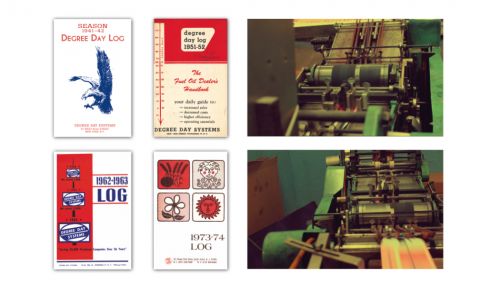All
FMCSA Audits and Reviews Can Have Costly Consequences
by Richard Pummell, Foley Carrier Services

Audit: a word that strikes fear into the hearts of many. Whether it is the Internal Revenue Service or the Federal Motor Carrier Safety Administration (FMCSA) reviewing documents and procedures, audits can be stressful processes that extend to uncomfortable lengths.
For companies regulated by the FMCSA, there are two types of audits that may occur: a New Entrant Safety Audit and a Compliance Review.
New Entrant Safety Audit
If you have recently obtained a U.S. Department of Transportation (DOT) number and/or an Operating Authority (MC Number), you have been entered into the FMCSA’s New Entrant Program and are considered a “New Entrant Motor Carrier.” Here is a look at what this means for you.
Monitoring Period
The FMCSA monitors New Entrants for a period of 18 months. During that time, New Entrants are expected to familiarize themselves with the FMCSA regulations that apply to their operations. Requirements include, but are not limited to, setting up any required programs such as Drug & Alcohol Testing; creating filing systems for Driver Qualifications and Vehicle Maintenance; and preparing for the New Entrant Safety Audit (NESA).
The NESA will occur at some point during the 18-month monitoring period, most often within the first three to six months. The point of the audit is to give the New Entrant an opportunity to demonstrate that they have adequate safety management controls in place in order to operate safely. Furthermore, it provides an opportunity to fine-tune any areas within the requirements that may be deficient.
The NESA results in a “Pass” or “Fail” designation, and although no financial penalties are issued for violations or failures, it is the prime component that determines whether a New Entrant’s DOT registration will be suspended or become permanent.
Notification of the NESA
Within the first 18 months of registration, New Entrants will receive a written notification from the FMCSA indicating that it is time to schedule their NESA. There are three methods in which the FMCSA conducts the audit.
- On-Site Audit – This is the most common method. The FMCSA auditor or investigator will come to a New Entrant’s principal place of business to conduct the review.
- Off-Site Audit – The FMCSA will schedule several NESAs for New Entrants within the same locale. The audits are then conducted at a predetermined site, such as a convention center or hotel.
- On-Line Audit – New Entrants are required to upload specific audit documentation to the FMCSA online.
Consequences of Failing the NESA
Certain factors that are listed below in this article may cause an automatic failure of a NESA. In the event of a failure, the New Entrant must implement a Corrective Action Plan to rectify the violations and ensure violations do not reoccur. The Corrective Action Plan must contain specific descriptions of action taken, as well as documentation of evidence. If corrective action is not submitted to or accepted by the FMCSA within 60 days for property carriers or 45 days for passenger/hazmat carriers, the New Entrant Registration will be revoked for a minimum of 30 days.
Compliance Reviews
Compliance Reviews (CRs) can occur at any point while a company is regulated by the FMCSA and are far more detailed than the NESA. Although CRs may occur at any time, various factors (which are addressed below) may “red-flag” the FMCSA to review a company’s DOT operations.
Unlike the NESA, a CR may result in substantial financial penalties depending on the amount and severity of violations found. In addition, there are three “safety rating” designations that may be assigned to a company following a CR.
Satisfactory – This is the most desired designation. It means the FMCSA has determined the company has adequate safety management controls in place and is doing their best to comply with federal requirements.
Unsatisfactory – As satisfactory is the most desired safety rating, unsatisfactory is the most dreaded. This means the FMCSA has found serious violations and/or non-compliance with federal requirements that may cause safety hazards. In addition to financial penalties incurred, the company must prove corrective action by submitting a “Safety Management Plan” deemed acceptable by the FMCSA within 60 days for property carriers or 45 days for passenger/hazmat carriers, or face being placed out-of-service.
Conditional – A conditional safety rating designation means that although the FMCSA has found at least one violation and/or non-compliance with federal requirements, the company does not necessarily pose an imminent safety hazard. Although a company will not face an out-of-service order, they will incur financial penalties and their DOT operations may be negatively impacted due to contractors and insurance companies being reluctant to work with them. Therefore, in order to remove a conditional safety rating designation, the company must prove corrective action by submitting a “Safety Management Plan” deemed acceptable by the FMCSA.
Sometimes the FMCSA conducts a “focused” CR that only deals with one aspect of federal requirements, and therefore a safety rating designation will not be assigned. However, violations found may result in financial penalties.
What may trigger a compliance review?
- Accidents – Even one accident can alert the FMCSA to conduct a CR. How much notice the FMCSA provides depends on the severity of the accident. Accidents that result in a fatality or serious injury will prompt the FMCSA to conduct a review with as little notice as possible.
- Roadside Inspections resulting in “out-of-service” violations – The more roadside inspections that occur with violations—such as mechanical, Hours-of-Service, or moving violations—the more likely the FMCSA will want to conduct a CR.
What Happens After Failure of a New Entrant Safety Audit?
It is never a good thing to start off on the wrong foot. The FMCSA tends to monitor companies that did not pass the NESA at the get-go. Having a firm grasp on the regulations is the best way to ensure the NESA is passed—and that the FMCSA won’t follow-up with a CR later on.
Critical and Acute Violations
There are specific violations considered “Critical” or “Acute” that if found will cause an automatic failure of the NESA or, for a CR, an Unsatisfactory/Conditional safety rating designation and fines.
These violations include, but are not limited to:
- Any type of Drug & Alcohol Testing violation (provided Drug & Alcohol testing is required).
- Using a driver without a valid license.
- Using a driver who has been deemed medically unqualified.
- Operating a CMV without the required level of insurance.
- Failing to maintain Hours of Service records.
- Operating a vehicle declared Out of Service during a Roadside Inspection before the required repairs are made.
- Operating a CMV that has not undergone an Annual/Periodic DOT inspection.
- Falsification of records.
FMCSA audits can be highly stressful, but fortunately there are companies specialized in helping. If you have any questions regarding FMCSA audits or DOT compliance programs, feel free to call Foley at 800-253-5506, and check out our website at www.foleyservices.com.
Related Posts
 100 Years of Helping Fuel Retailers Deliver!
100 Years of Helping Fuel Retailers Deliver!
Posted on August 18, 2025
 U.S. Competing to Secure Critical Minerals
U.S. Competing to Secure Critical Minerals
Posted on June 16, 2025
 The Clean Air Act, the EPA, and State Regulations
The Clean Air Act, the EPA, and State Regulations
Posted on May 14, 2025
 Day Tanks Support Back-up Generators in Extreme Conditions
Day Tanks Support Back-up Generators in Extreme Conditions
Posted on March 10, 2025
Enter your email to receive important news and article updates.
